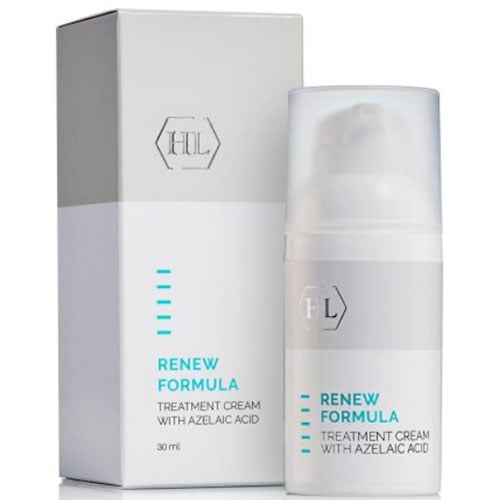Azelaic Acid is one of those ingredients that people hear about when searching for help with acne, dark spots, redness or uneven texture. It has a gentle approach but still delivers visible results, which is why it is recommended so often for many different skin concerns. This updated guide explains what Azelaic Acid is, how it works, what it does for your skin and how to use it in your routine in a simple, beginner friendly way.
What Is Azelaic Acid
Azelaic Acid is a naturally occurring ingredient found in grains such as wheat and barley. Your skin also produces small amounts of it through friendly microbes that live on its surface. The version used in skincare products is made in a laboratory to ensure purity and stability. It is a mild acid that works gently, which makes it suitable for sensitive skin and everyday use.
What Does Azelaic Acid Do
People often want to know what exactly this ingredient does. Azelaic Acid supports the skin in several ways at the same time. This is why it helps with multiple problems once it becomes part of your routine.
- Helps fade dark spots. It slows down pigment production and reduces the appearance of leftover marks from acne or sun exposure.
- Reduces redness. It calms stressed or reactive skin, making it a popular choice for rosacea.
- Supports clearer skin. It gently keeps pores clean and reduces the bacteria that lead to breakouts.
- Improves texture. It helps skin renew itself at a healthy pace, which creates a smoother, brighter surface.
How Azelaic Acid Works
Azelaic Acid has a very balanced mode of action. It lightly exfoliates, reduces inflammation, targets bacteria and regulates pigment production. It does all of this without thinning the skin or causing heavy irritation, which makes it safe to use for long periods of time.
How long does it take to see results
Most people notice a more even and calmer appearance after four to eight weeks of consistent use.
Is Azelaic Acid good for sensitive skin
Yes. It is one of the few active ingredients that works well for sensitive or redness prone skin. Many dermatologists recommend it as a gentle alternative to stronger acids.
What Azelaic Acid Is Used For
Azelaic Acid is a versatile ingredient that can support several concerns at once. Here are the most common reasons people use it.
- Acne and breakouts. It keeps pores clean, helps balance bacteria and reduces the redness often linked to acne. (Shop Acne Treatments)
- Rosacea and general redness. Its calming effect helps reduce flushing and visible bumps on sensitive skin. (Find Rosacea Relief)
- Hyperpigmentation and uneven tone. It is effective for fading dark spots, melasma and post acne marks. (Explore Brightening Products)
- Texture and dullness. It softens rough areas and creates a smoother, brighter finish.

Is Azelaic Acid good for pigmentation
Yes. It is one of the gentlest ingredients for fading discoloration without harsh peeling.
Can Azelaic Acid help acne and pigmentation at the same time
Many people use it exactly for that reason. It can calm active breakouts while also fading older marks.
When to Use Azelaic Acid
You can use Azelaic Acid in the morning, in the evening or both. If you are new to it, start with one application per day. As your skin adjusts, you can increase to twice a day. Morning use is fine as long as you apply sunscreen afterward.

Should you use it before or after moisturizer
Apply Azelaic Acid to clean, dry skin. You can follow with a moisturizer and then sunscreen during the day.
How to Use Azelaic Acid
Azelaic Acid is available in creams, serums and gels. The most common strengths are:
- 10% - Best for beginners, mild acne and general brightening.
- 15-20% - Prescription strengths, used for rosacea and stubborn concerns.
Can you combine Azelaic Acid with other actives
Yes, in most cases. It works well with Niacinamide, Hyaluronic Acid and gentle moisturizers. If your skin is sensitive, alternate it with stronger ingredients like retinol.
How to Build a Routine with Azelaic Acid
Here are simple routine ideas based on common concerns.
Routine for acne prone skin
- Cleanser for oily or combination skin
- Azelaic Acid serum
- Lightweight moisturizer or Niacinamide
- SPF for daytime
Routine for hyperpigmentation
- Gentle cleanser
- Vitamin C in the morning
- Azelaic Acid in the evening
- Hydrating cream
- Daily SPF
Routine for redness and rosacea
- Calming cleanser
- Azelaic Acid cream
- Simple moisturizer
- Mineral sunscreen
Azelaic Acid Compared to Other Ingredients
Azelaic Acid compared to Salicylic Acid
Salicylic Acid is stronger at clearing oily pores and blackheads. Azelaic Acid is milder and better for redness and pigmentation. Many people use both by applying Salicylic Acid a few times per week and Azelaic Acid daily.
Azelaic Acid compared to Niacinamide
Both calm redness and help with acne. Niacinamide supports oil balance, while Azelaic Acid helps with discoloration. They work especially well together.
Azelaic Acid compared to Retinol
Retinol is more powerful for signs of aging and long-term exfoliation. Azelaic Acid is easier to tolerate and friendlier for sensitive skin. Some people alternate them to avoid irritation.
Common Mistakes When Using Azelaic Acid
- Using too many strong products at once
- Expecting immediate results, this ingredient needs consistency
- Skipping sunscreen during pigmentation treatment
- Applying too much product, a small amount is enough
Quick answers for your routine
How long does Azelaic Acid take to work? Most people see improvement within one to two months with daily use.
Can you use it every day? Yes, start slowly, then increase as your skin becomes comfortable.
Is the correct name azelaic acid or azelic acid? The correct spelling is azelaic acid. Many people type azelic acid or azaleic acid, but they all refer to the same ingredient.
Can you use Azelaic Acid and vitamin C together. Yes. Many people use vitamin C in the morning and Azelaic Acid in the evening for brightening benefits.
Azelaic Acid is a gentle and effective ingredient that helps with acne, redness, dark spots and texture all at once. With consistent use it can bring clarity, calmness and a more even tone to your skin while remaining friendly enough for daily use.
















